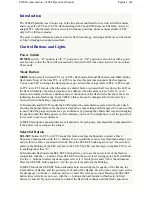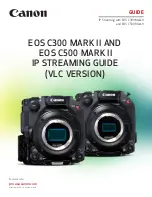
V1.02
Thom Hogan’s Complete Guide to the Nikon D300
Page 113
the available sectors that can be used. Since you don’t always
fill a card with images, this means that a well-used card that is
nearing write capacity will likely first start showing lower
capacity each time you use it, a strong warning that you
should probably consider retiring it.
Different card types work at different speeds. You’ll see them
marked with ratings like “100x,” “280x”, or even “305x.”
From a technical standpoint, things are greatly complex under
the covers; the current CompactFlash specification runs to
194 pages of dense technical information. And it seems that
interpretations of what “100x” means vary between
manufacturers. Still, such ratings are a casual way in which
you can assess performance. For a rigorous analysis, check
http://www.robgalbraith.com
(click on the
CF/SD
link in the
upper left side of the page) for a detailed discussion and
review of current flash cards, along with write speed
information when used on various Nikon DSLRs.
Microdrives
Hitachi’s Microdrive is a miniature (1”) hard disk mounted
inside a Type II style CompactFlash enclosure. Originally
developed by IBM in Japan, the Microdrive was passed to
Hitachi when the IBM drive division was sold.
There are two older “families” of Microdrives, the original
IBM units, dubbed MK1 models (170MB and 340MB), and the
later IBM MK2 models (512MB and 1GB, and a revision of
the 340MB). In late 2003, Hitachi introduced a third
generation (family) with 2GB and 4GB versions, and the
newest versions come in 6GB and 8GB sizes, with hints that
more increases are forthcoming. The designs of each family
are a bit different.
















































